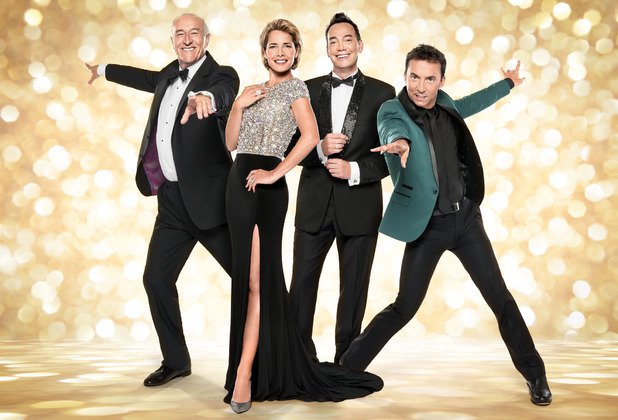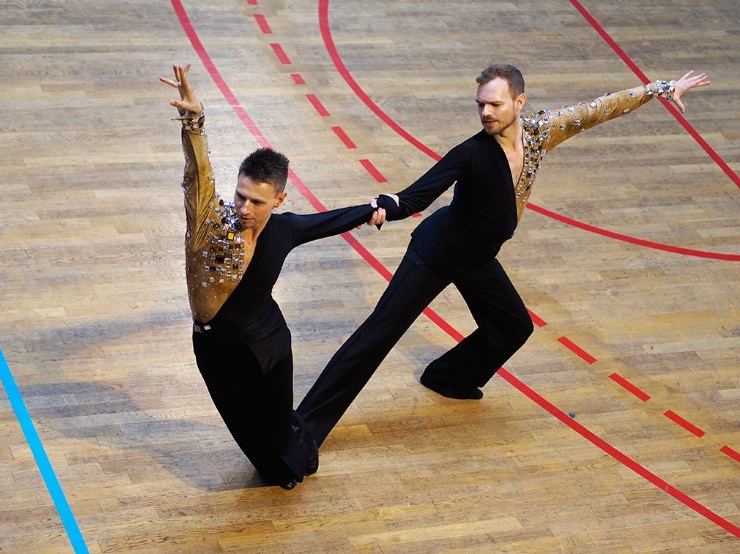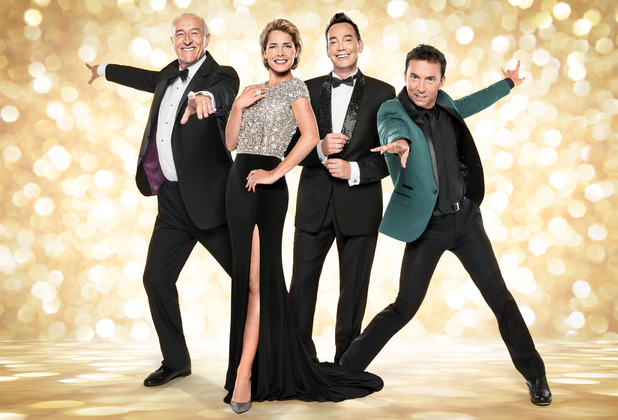Why this same-sex dance champ thinks Strictly isn’t ready for same-sex pairings

 His view may surprise some, given his profession, but top same-sex dance champ Tim Regan (pictured, at right) says Strictly Come Dancing shouldn’t introduce a same-sex pairing this season. He explains why:Strictly Come Dancing
His view may surprise some, given his profession, but top same-sex dance champ Tim Regan (pictured, at right) says Strictly Come Dancing shouldn’t introduce a same-sex pairing this season. He explains why:Strictly Come Dancing
fever is here. And, following Craig Revel-Horwood’s recent insistence that there will be a same-sex pairing on the show, there may be some viewers waiting in anticipation to see if the next celebrity revealed could form Strictly’s first same-sex dance partnership.
I’m an avid same-sex dance competitor – I was recently crowned European Same-Sex 10 Dance Champion. So it might surprise you to learn that I’m not one of those eagerly anticipating a same-sex pairing on the show.
Here’s why.
Same-sex dancing was thrust into public debate last July, when the British Dance Council (BDC) proposed a rule change to define a dance partnership as a man and a woman. If passed, same-sex partnerships would be banned from dance competitions run under BDC rules, unless the individual organisers said otherwise.
This rule change was never passed, but the media attention surrounding it created great publicity for same-sex dancing, and speculation grew about whether a same-sex partnership should compete on Strictly; particularly following Israel’s Dancing with the Stars, which featured an all-female partnership in 2011.
This speculation resurfaced recently after judge Revel-Horwood stated that Strictly would feature a same-sex couple either this year or next, an idea supported by host Tess Daly. However, ex-Strictly professional James Jordan blasted this, saying “ballroom dancing is about a man dancing with a woman” and Dr Christian Jessen (somewhat randomly) agreed, assuming it would “just look silly.”

However, what do they really know about same-sex dancing?
Craig’s summation that “you just have to decide who goes backwards” is a dramatic over-simplification of the challenges you face as a “follower”. And regarding Dr Christian’s comments: of course it may look silly. When ballroom dancing is traditionally between a man and a woman, it is obvious an audience may not immediately accept the idea of two men or two women dancing together.
Frankly, I was not immediately convinced when I first watched two men waltzing.
However, if you attend a same-sex dance event or competition, you soon realize that whether you see a mixed couple, two men, or two women, it’s all just dancing!
Unfortunately, the opportunities to see a same-sex competition are few and literally far between. There is one annual championship in the UK, and only a handful of other competitions scattered across the continent and America.

But this does not mean same-sex dancing is a fledgling sport. It is actually well established, with some competitions running for a number of years; such as the annual Pink Jukebox Trophy in London which celebrated its 18 year anniversary in February.
We are seeing such world-class adjudicators as Dawn Vickers and Pamela McGill coming to judge. And each time, without fail, the feedback from the judging panel is always that the enjoyment and atmosphere at these competitions is unlike any other.
So what is it that creates this joyous atmosphere, and that makes same-sex dancing so special? I believe it stems from a freedom from “convention”. In same-sex dancing, not only are you free to dance with whoever you wish regardless of gender, you can also choose what role you play; the men have the chance to experience following, and the women leading.
And while some dancers choose a role to stick to and specialize in, some – like myself – even choose to dance both.
Clearly, there is so much more to same-sex dancing than most people understand. I would be thrilled if everyone had the opportunity to see and realize this for themselves, but is it the right time for a same-sex couple to compete on Strictly?
The show has already dipped a toe into same-sex dancing, with the professionals including a same-sex segment in a routine (albeit more for comedic effect). It is also true that the nation is now more accepting of same-sex issues, both in the real world and in popular television shows. There was a time that a same-sex kiss on a soap was enough to grab the headlines, whereas nowadays there is hardly a series that does not feature a gay storyline.
But we did not reach this point overnight.
So far the nation has had little exposure to same-sex dancing, and all too often those who cast judgment have never even seen it themselves.
Personally, I fear if a same-sex couple competed for the glitterball this year it would be a impulsive gimmick to gain ratings, and the true understanding and potential of same-sex dancing would not be shown.
Instead, why not start smaller? Feature a performance by some trained same-sex dancers. Demonstrate both to the nation and the professionals how clever the choreography can be, perhaps also how roles can change, and how two men and two women can still perform a deep or dramatic storyline together, as opposed to just a comedy.
Yes, it may not be immediately accepted. But if we build the exposure little by little, we will soon reach the right time to introduce a same-sex competitor.
Then we can demonstrate that, although the dancers may be the same sex, and it may look different, it is certainly far from silly.
To discover more about same-sex competitive dancing, please contact the United Kingdom Same-Sex Dance Council (UKSSDC) on info@ukssdc.co.uk or via the Facebook page.
Words by TIM REGAN.
